With a little help from her friends of course!
On our way to set up a malaise trap before the rains hit while in Costa Rica last month, we stumbled across the following scene (click photos to enlarge):
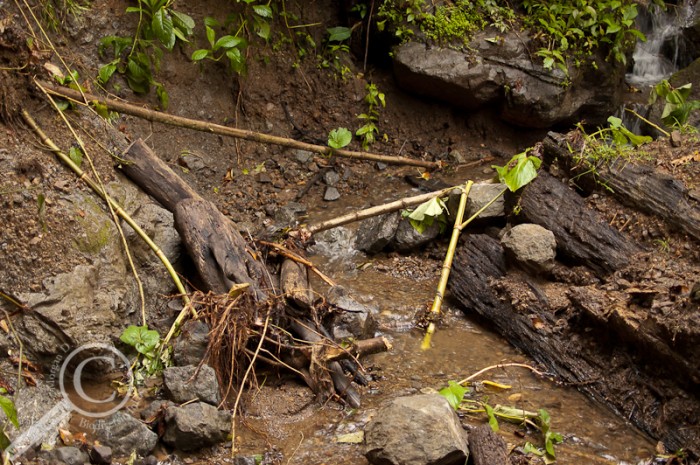
The afternoon rains had caused a small landslide along the banks of this mountain stream, which wasn’t an uncommon sight, but when we crossed the stream we noticed the branch crossing the stream was writhing with ants. It seems one of the stumps on the left had been sheltering an ant colony at the top of the hill before plummeting down to the stream, and the ants were abandoning ship for the drier logs on the right. Their “bridge” wasn’t quite perfect however, forcing the ants to band together and come up with a solution to their problem:
A small 2 inch gap between the branch and the rock may have caused lesser insects to turn around in defeat, but by banding together, the ants formed a formicidable bridge to help their sisters across. I’d heard about ant columns doing this sort of thing before and it was certainly interesting to see, but when we traced the line of ants back up the branch we saw something that I’ve never heard of before (although I’m not exactly up to date on my myrmeco-behaviour):
This frustratingly-difficult-to-photograph-phenomenom is a retaining wall along the downward curve of the branch, allowing the colony to get around debris on the top side of the branch without fear of falling into the raging river below. You can see the dense aggregation of ants along the back, the water shimmering in the distance, and a steady stream of ants exiting the beltway on the lower right. The ants in the wall were 3-4 thick and 2-3 high making sure that no ant faced a watery grave. Some of the larger castes were even waiting with jaws agape in case someone started to fall off the log:
When ants decide to move, they take everything with them, including their leftovers. Good thing they got dinner to go:
We also saw several ants carrying larvae away from the impending doom:
I’m far from an ant taxonomist, but from my limited understanding, this larvae doesn’t really look like an ant. Perhaps its another prey item, or maybe I got really lucky and imaged an impostor successfully being carried by its unwitting host:
Here’s a closer crop of the larval head for those that are curious:
Hopefully some of the myrmecophiles out there will be able to help on a potential ID for both the ant and whether this is a larval-mimic or not.
We ended up getting caught in the rain while putting up the malaise trap thanks to these ants, but I’d say it was well worth it!
P.S. I have samples of these ants preserved in ethanol if anyone is interested in them. Let me know if you’d like them or if you know someone else who would be interested and I’ll arrange to have them shipped off.

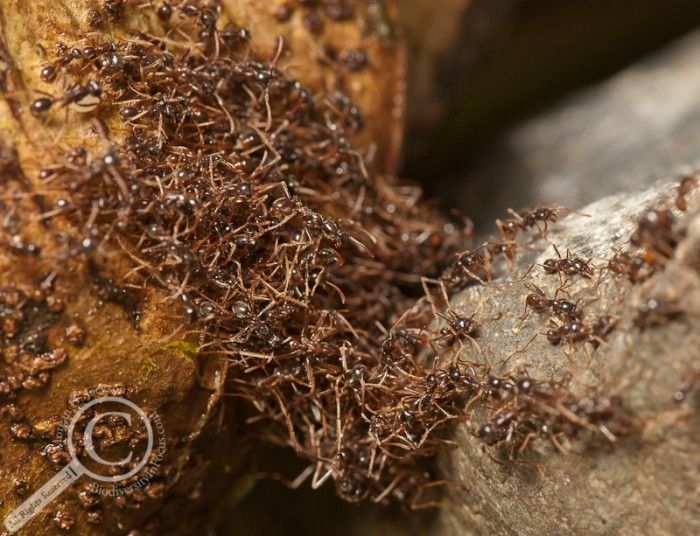
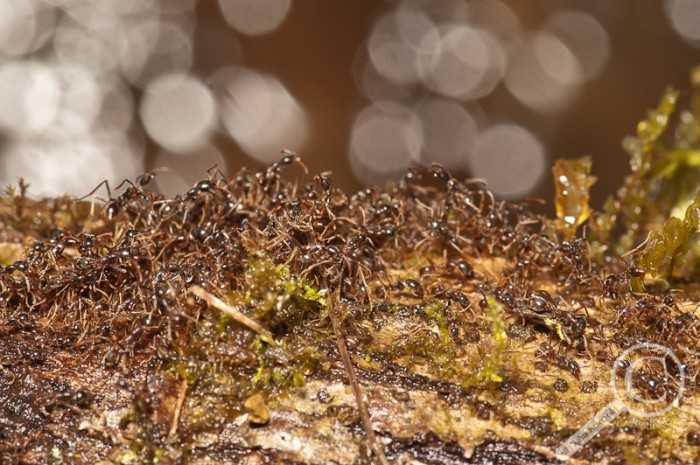
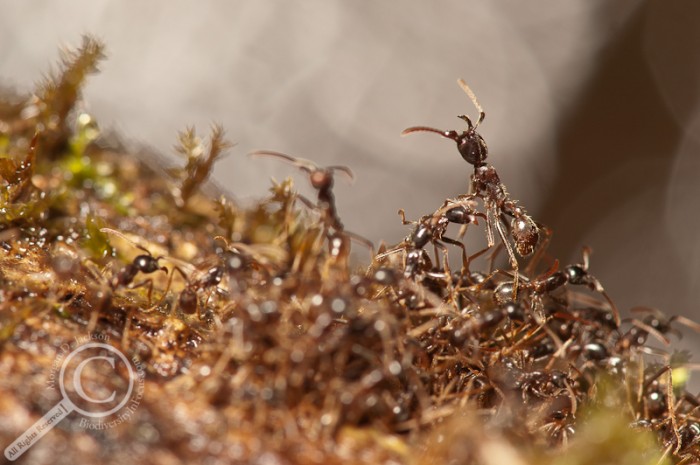
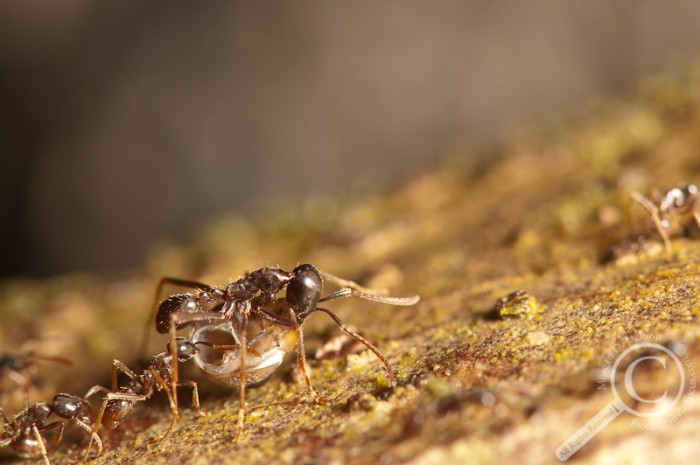
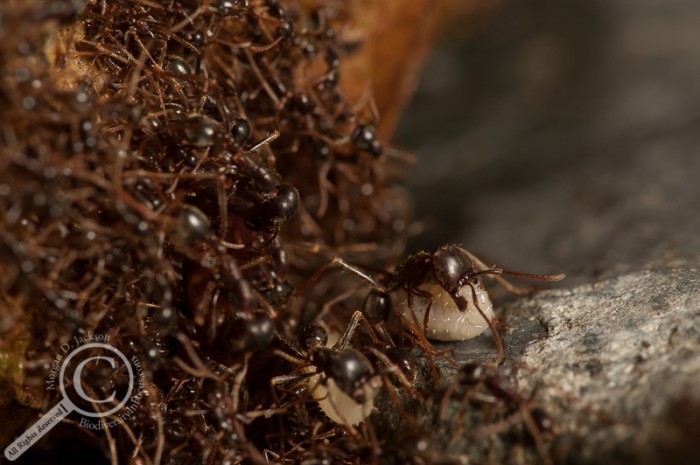
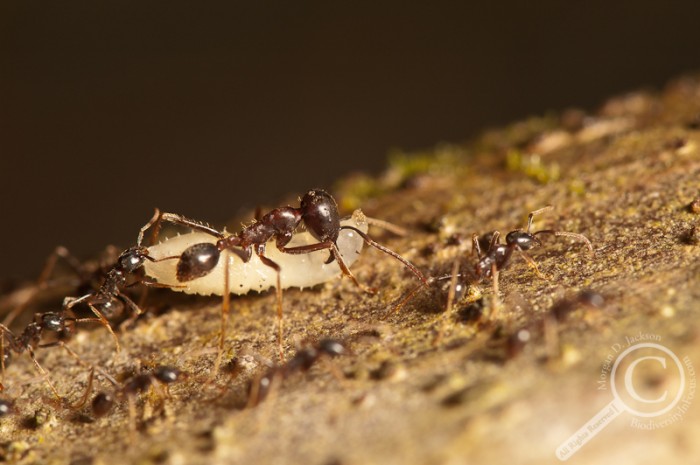
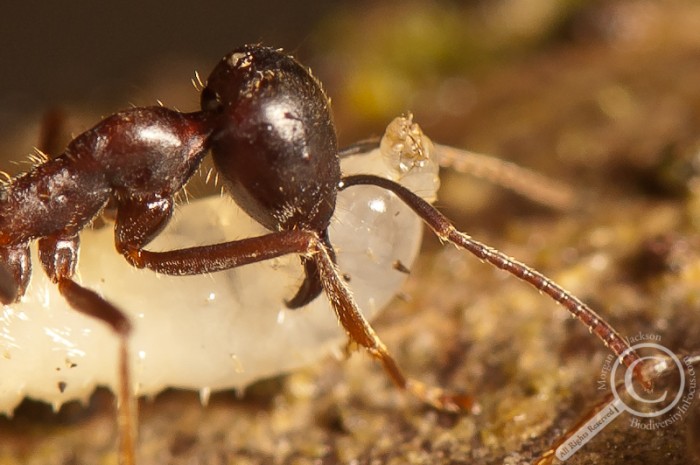
That is fascinating stuff Morgan, Alex Smith at BIO (I know, I know) works on ants of Costa Rica, maybe try contacting him? I can provide his email if needed
Funny you should mention Alex, I just sat in on two ant seminars this week by visiting scientists (Brian Fisher from Cal Acad, and Corrie Moreau from the Field Museum) that he organized. It was a great series of talks on ants! Despite old political lines, I hope that the entomologically inclined here at Guelph can come together and continue (and perhaps expand upon) these sort of seminars!
Agreed…we entomophiles should band together and take over the world bwahahaha
I wonder if it’s a myrmecophilous coleopteran larva of some kind.
That’s what I was kind of thinking Ted! It doesn’t really look like other ant larvae I’ve seen, and it’s pretty large compared to that soldier, but my tropical larval identification skills aren’t strong enough to decipher this one!